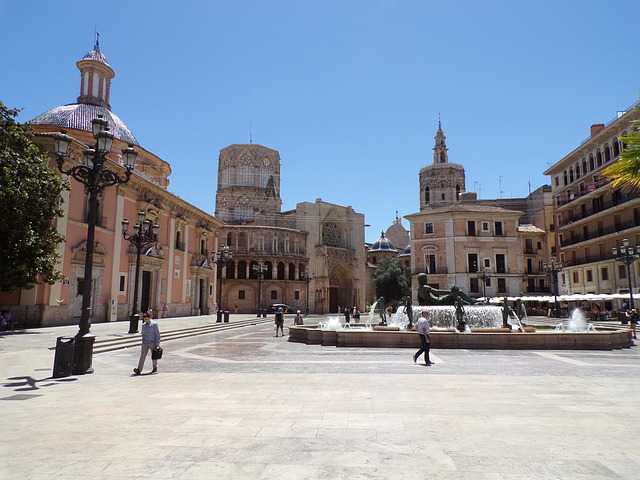Table of Contents
- Exploring the Emotional Language of Abstract Art
- Techniques and Mediums Used in Creating Abstract Masterpieces
- Choosing the Right Abstract Art for Your Space
- Understanding the Value and Investment Potential of Abstract Art
- Q&A
- In Conclusion
Exploring the Emotional Language of Abstract Art
Abstract art has a unique ability to resonate deeply with viewers, often evoking a profound emotional response that transcends traditional representation. At its core, abstract artwork is less about depicting objects and more about expressing feelings, thoughts, and sensations. Colors, shapes, and forms intertwine to create a language all their own, making each piece a subjective experience. This emotional language allows each viewer to project their feelings and interpretations onto the artwork, resulting in a diverse array of reactions.
Artists often employ various techniques to manipulate perception and stir the emotions of the audience:
- Color Choices: Vibrant reds may ignite passion or anger, while calm blues can evoke tranquility and introspection.
- Form and Composition: Jagged lines can provoke tension, whereas smooth, flowing shapes suggest harmony.
- Texture: The tactile aspect of a painting can influence emotional connections, with rough textures often eliciting rawness and turmoil.
The interplay of these elements crafts a narrative that engages the viewer on a visceral level. For instance, a chaotic arrangement of forms may represent inner turmoil, prompting the viewer to reflect on their own conflicts. Conversely, a balanced composition could symbolize serenity and peace, inviting contemplation. This ambiguity enriches the layered nature of abstract art, allowing it to communicate complex ideas without the constraints of literal representation.
| Element | Emotional Impact |
|---|---|
| Color | Can provoke specific feelings (e.g., red for excitement, blue for calm) |
| Shape | Influences emotional reactions based on personal interpretations (e.g., circles for unity, angular shapes for discomfort) |
| Texture | Enhances emotional depth through physicality (e.g., rough textures signal struggle) |
Ultimately, the appeal of abstract art lies in its ability to provide a safe space for emotional exploration. It acts as a mirror, reflecting our own experiences and feelings back to us in nuanced and sometimes unexpected ways. Each encounter with an abstract piece can be a journey, unraveling layers of meaning that resonate differently each time we engage with it. This ongoing dialogue between the artwork and the viewer is what makes abstract art a powerful avenue for emotional connection and expression.


Techniques and Mediums Used in Creating Abstract Masterpieces
Creating abstract masterpieces involves a diverse range of techniques and mediums that allow artists to express their inner visions and emotions. One of the primary approaches is the use of color. Artists often rely on bold hues to evoke feelings, convey meaning, or create a sense of movement. By layering colors, they can achieve depth and texture, turning a canvas into a vibrant exploration of imagination. Techniques such as glazing or using complementary colors can further enhance the visual impact, allowing the artwork to resonate on multiple levels.
Another vital method in abstract art is gestural mark-making. This technique emphasizes spontaneity and instinct, allowing artists to unleash their creativity without constraining themselves to traditional forms. Brushes, palette knives, or even hands can be employed to create dynamic lines and shapes, pushing the boundaries of conventional representation. The act of creation becomes as significant as the finished piece, highlighting the artist’s emotional landscape during the process.
Mediums also play a crucial role in the creation of abstract artworks. Mixed media is often incorporated, combining various materials such as acrylics, oils, pastels, and even textiles to achieve unique effects. This versatility allows artists to explore and redefine the boundaries of their work. For example, utilizing collage elements alongside paint can add an additional layer of texture and meaning, engaging the audience’s senses in unexpected ways.
| Medium | Characteristics | Example Artists |
|---|---|---|
| Acrylic Paint | Quick-drying, vibrant colors, can mimic other mediums | Mark Rothko, Julie Mehretu |
| Oil Paint | Rich texture, slow drying, allows for blending | Gerhard Richter, Yves Klein |
| Pastels | Soft, chalky textures, vibrant color options | Edgar Degas, Henri Matisse |
| Digital Art | Endless possibilities, customizable techniques | Karin Davie, Casey Reas |
the incorporation of negative space is a fundamental principle in abstract art that can lead to impactful compositions. By strategically leaving portions of the canvas empty, artists can draw attention to the interplay between subject and background, creating a balance that invites contemplation. This method encourages viewers to engage with the artwork, allowing their imagination to fill in the gaps and form personal connections to the piece. Ultimately, it is this blend of innovative techniques and thoughtful use of mediums that brings abstract art to life, making it a profound avenue for artistic expression.


Choosing the Right Abstract Art for Your Space
When it comes to selecting abstract art for your environment, it’s essential to consider how the piece resonates with the overall vibe of your space. Abstract art can evoke a range of emotions and interpretations, so reflecting on the atmosphere you wish to create is the first step. For instance, a vibrant and chaotic abstract piece could energize a room, while more subdued tones might amplify tranquility. Think about the following elements:
- Color Palette: Choose colors that complement your existing décor.
- Size: Ensure the scale of the artwork fits well within the context of the room.
- Style: Consider whether you prefer geometric designs, fluid patterns, or minimalist forms.
Another crucial aspect to contemplate is the emotional response you want the art to elicit. Different styles and color combinations can trigger various feelings. For example, a large canvas featuring warm colors may invoke feelings of warmth and comfort, making it suitable for a cozy living room. On the other hand, cooler hues in a mesmerizing design can provide a calming influence, perfect for a meditation space. Here are a few emotional impacts that different abstract styles can have:
| Style | Emotional Impact |
|---|---|
| Geometric | Order and Structure |
| Fluid | Freedom and Movement |
| Textured | Depth and Complexity |
| Monochrome | Minimalism and Serenity |
consider the functionality of the space where the artwork will reside. If the piece is going to hang in a high-traffic area, such as a hallway or entryway, choose art that is not only durable but also captivating enough to draw attention without overwhelming the area. Conversely, in a private space like a bedroom or study, you can opt for more personal pieces that resonate with your introspective moments. Pay attention to:
- Placement: Decide where the artwork will be most impactful.
- Lighting: Consider how natural and artificial lighting will affect the artwork’s appearance.
- Surroundings: Ensure the art interacts harmoniously with furniture and other décor elements.


Understanding the Value and Investment Potential of Abstract Art
Abstract art often invites viewers into a realm of emotional expression and intellectual exploration. Unlike traditional artwork that aims to represent reality, abstract pieces break away from the norm by focusing on colors, shapes, and forms. This unique approach not only challenges the perception of art but also enhances its investment potential. Collectors are increasingly drawn to the inherent value of such works, as they reflect individual creativity and cultural commentary.
One appealing aspect of investing in abstract art is its market resilience. Over recent years, abstract creators have gained recognition in prestigious auction houses, frequently achieving higher sale prices compared to other genres. Notable market trends demonstrate that quality abstract works tend to retain or increase in value over time, making them a viable option for art investors. By investing early in emerging artists, collectors can potentially capitalize on future appreciation.
When considering abstract art as an investment, it’s essential to be aware of several factors that can influence value:
- Artist Reputation: Well-established artists often command higher prices, but emerging talents can offer exponential returns.
- Provenance: A piece’s history, including previous ownership and exhibitions, can significantly increase its value.
- Medium and Technique: The materials used and the artistic techniques can impact durability and desirability.
- Market Demand: Trends can shift, making certain styles more sought after than others.
Furthermore, the emotional resonance of abstract art can amplify its investment appeal. Many collectors are not just looking for financial returns but are also enamored by the personal connection they feel towards specific pieces. This subjective appreciation is unique to abstract works, as the interpretation varies from person to person. Hence, while some buyers might focus on aesthetic pleasure, others could view these artworks as profound statements of personal identity or cultural critique, further enhancing their worth in the collector’s market.
Q&A
Q&A on Abstract Artworks
Q: What exactly is abstract art? A: Abstract art is a genre of visual art that emphasizes the expression of ideas and emotions rather than depicting objects or scenes from the real world. This form transcends traditional representation, using colors, shapes, and forms to convey a deeper emotional essence or conceptual message.Q: How is abstract art created? A: Abstract art can be created through various techniques and mediums, including painting, sculpture, and digital art. Artists often experiment with materials, layering, and spontaneous techniques to develop unique expressions. The creative process is highly subjective, relying on the artist’s intuition and individual perspective.
Q: What are the key elements of abstract art? A: Key elements of abstract art include color, form, line, texture, and composition. Artists manipulate these aspects to evoke feelings or ideas, often leading to interpretations that differ from one viewer to another. The absence of identifiable subjects invites onlookers to engage their imagination.
Q: Is abstract art considered ”real” art? A: Yes, abstract art is widely regarded as legitimate art within the contemporary art world. It challenges conventional notions of beauty and representation, encouraging diverse interpretations and emotional responses. Art, in its many forms, is about personal expression and resonating with the audience.
Q: Can anyone create abstract art, or is it reserved for trained artists? A: Abstract art is accessible to everyone, regardless of artistic training or background. The essence of creating abstract works lies in self-expression and experimentation. Anyone who feels a connection to colors or shapes can create or appreciate abstract art, making it a very personal and inclusive form of creative expression.
Q: How can I interpret an abstract artwork? A: Interpreting abstract art is very much a personal journey. Focus on how the artwork makes you feel—what emotions or thoughts arise? Look at the colors, shapes, and lines, and consider how they interact. There are no right or wrong interpretations, as art is a reflection of individual perspective.
Q: What are some famous abstract artists I should know about? A: Several influential abstract artists have significantly shaped the movement. Key figures include Wassily Kandinsky, often heralded as the pioneer of abstract art; Piet Mondrian, known for his geometric compositions; and Jackson Pollock, famous for his drip painting technique. Each artist has a unique style that contributed to the evolution of abstraction in art.
Q: How has abstract art evolved over the years? A: Abstract art has evolved through various artistic movements, from the early 20th century’s avant-garde explorations to today’s diverse practices. It has absorbed influences from other styles and cultures, leading to hybrid forms and new media. Today, abstract art continues to thrive in contemporary art scenes worldwide, reflecting current societal themes and technological advancements.
Q: Where can I see abstract art in person? A: Abstract art can be found in numerous venues, including art galleries, museums, and exhibitions. Many contemporary art spaces plan shows focusing solely on abstract works. Additionally, public installations often feature abstract pieces, allowing wider accessibility to this dynamic form of art.
